[Windows 11/10] How to use Task Manager to check computer performance
Please go to the corresponding instruction based on the current Windows operating system on your computer:
Use Task Manager to check applications with the occupied computer resource
- Right-click the [Start] icon
 on the taskbar①, then select [Task Manager]②.
on the taskbar①, then select [Task Manager]②.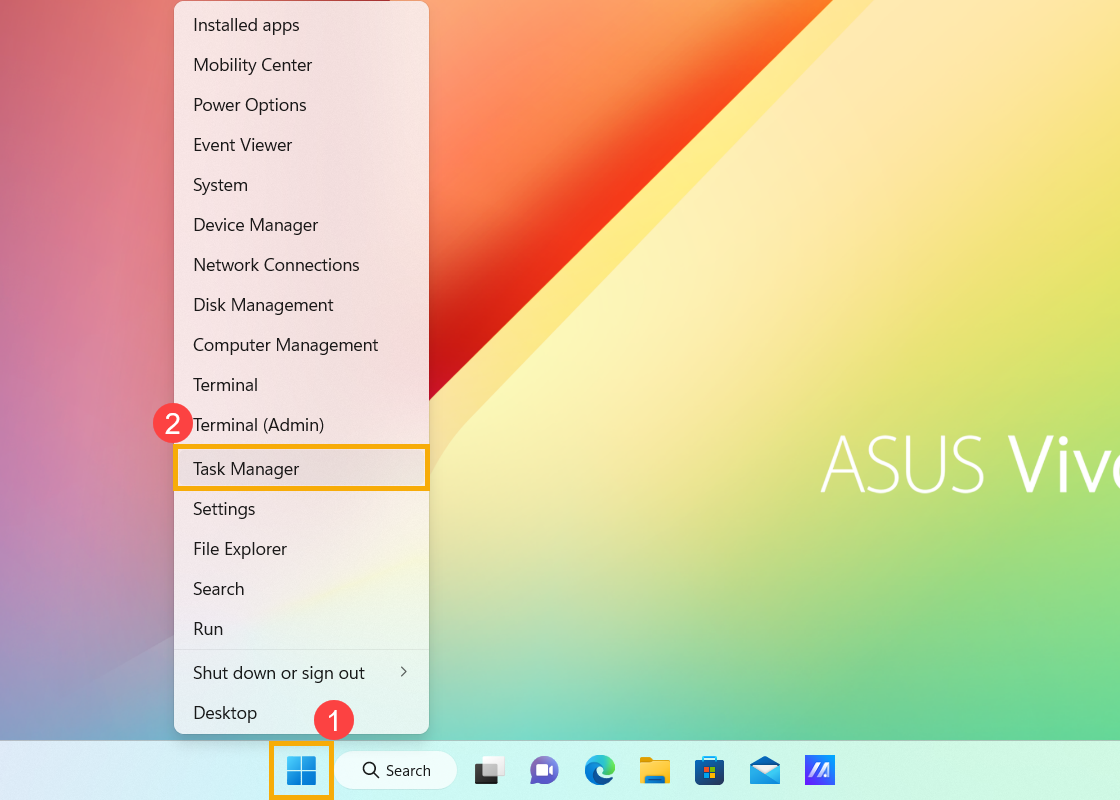
- In Task Manager, right-click on the Name column③, then select [Type]④ to see which type that each process belongs to.
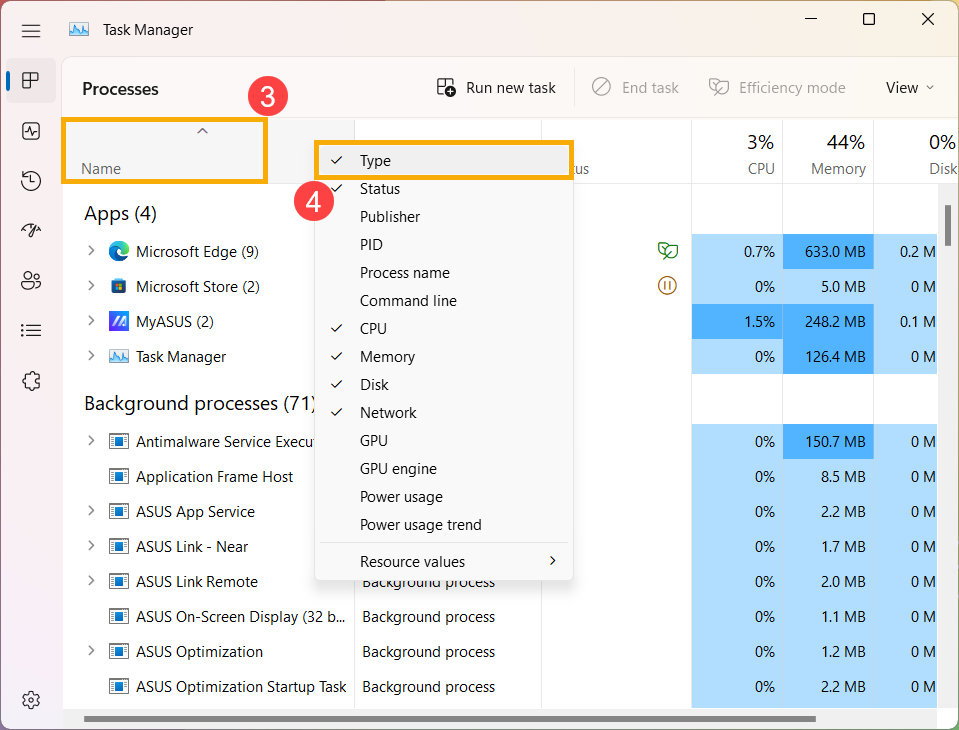
- If you want to see how applications are affecting your CPU, please click [CPU]⑤ column. It will sort by the percentage of CPU capability used (largest to smallest) by each process after the down-arrow
 appeared.
appeared. 
- If you want to see how applications are affecting your Memory, please click [Memory]⑥ column. It will sort by the percentage of Memory capability used (largest to smallest) by each process after the down-arrow
 appeared.
appeared.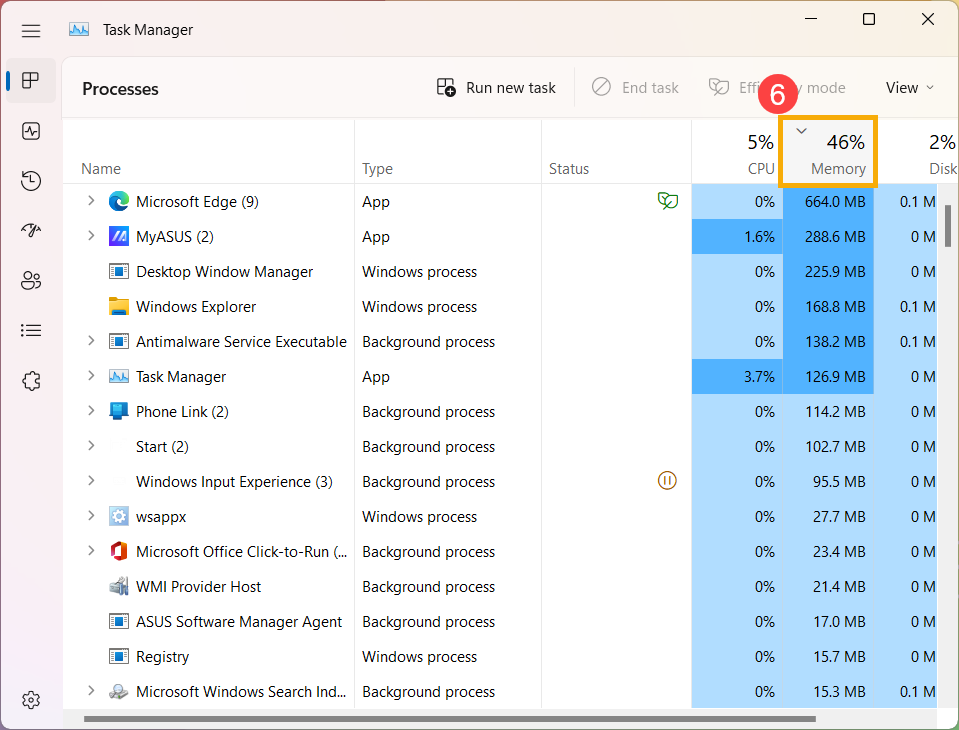
- After it sorts by the percentage of resources used by each process, you will see the occupied resources which belongs to applications type in your computer.
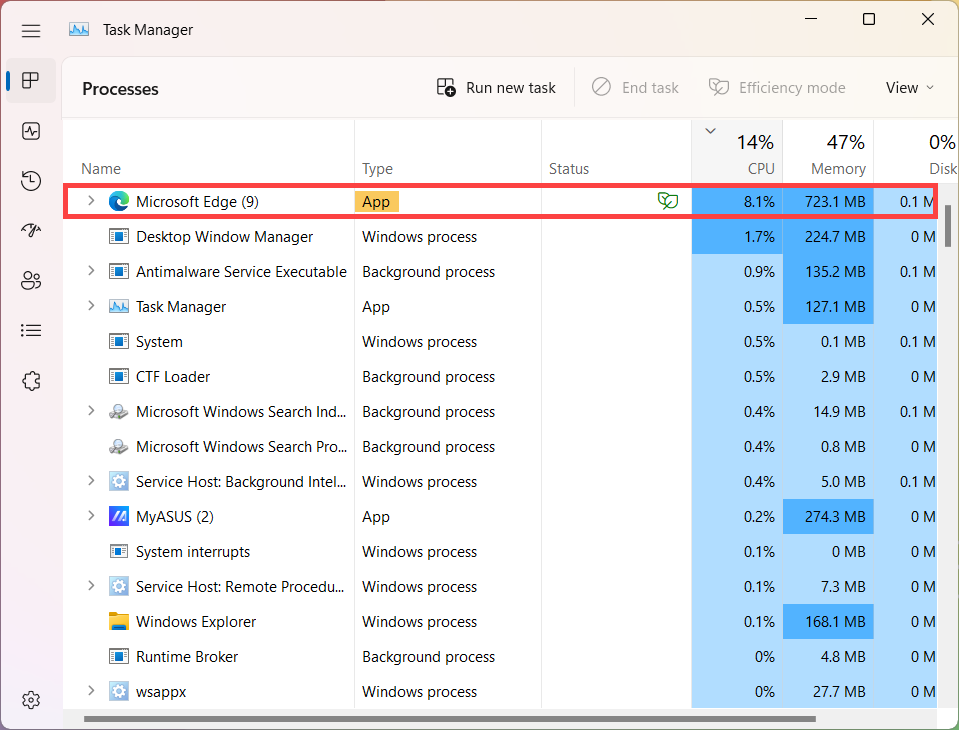
- If you would like to check the used status of other resources (such as Disk, Network, or GPU), please follow the above steps 3-6.
End any malfunctioning processes
While you observe some applications occupy a larger percentage of the resource, and you are not using them, if you want to end these processes, please try to normally close them first. (For example, open this application and click close.)
If it cannot be closed normally or the resource is still occupied in Task Manager after closing it, you can use Task Manager to force it to close.
Right-click on the process①, then select [End task]②, this process will be forced to close.
Note: If the type is not “App” (such as Windows process), we don’t recommend that you force to close it to prevent any abnormal system operation.

Use Task Manager to check applications with the occupied computer resource
- Right-click on the anywhere of taskbar, then select [Task Manager]①.
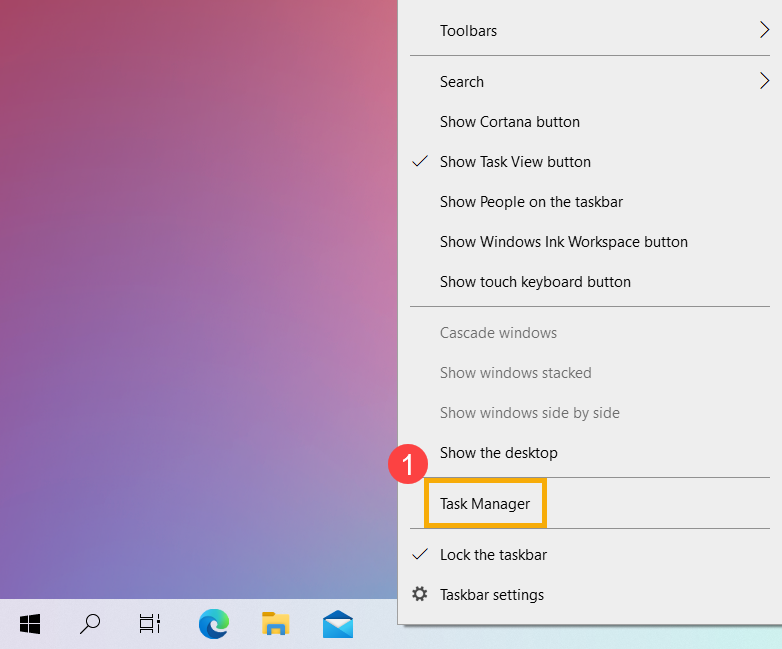
- If you see the following illustration, please click [More details]②.
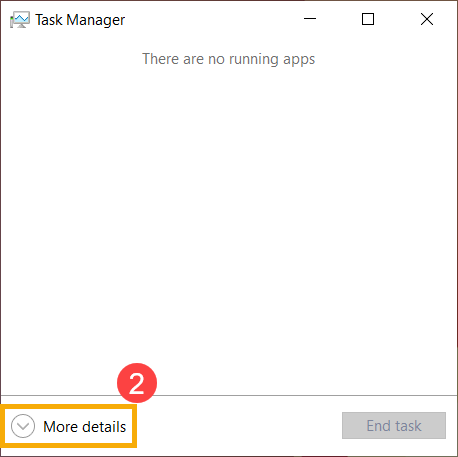
- In Task Manager, right-click on the Name column③, then select [Type]④ to see which type that each process belongs to.
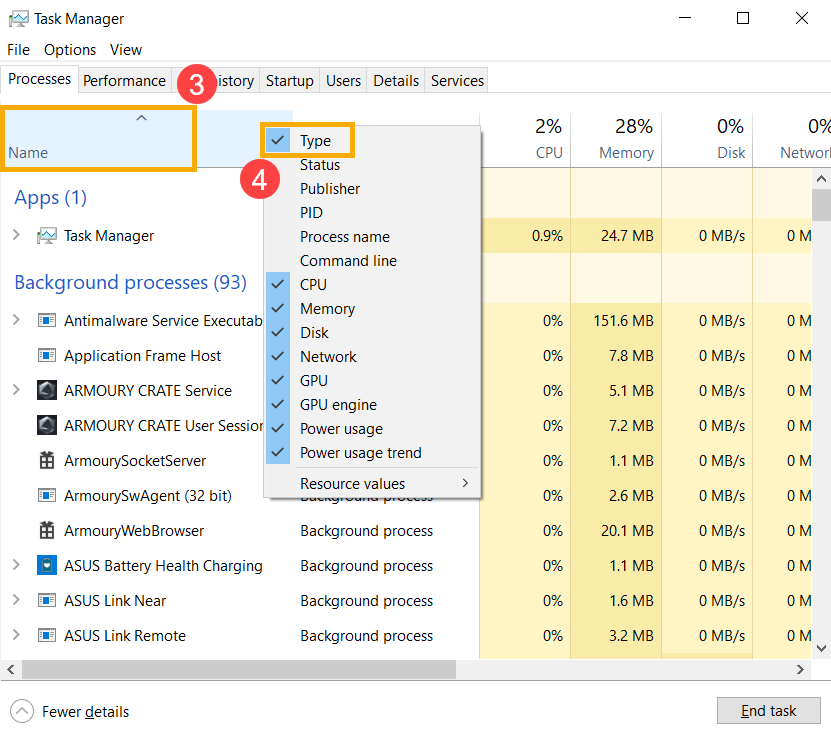
- If you want to see how applications are affecting your CPU, please click [CPU]⑤ column. It will sort by the percentage of CPU capability used (largest to smallest) by each process after the down-arrow
 appeared.
appeared. 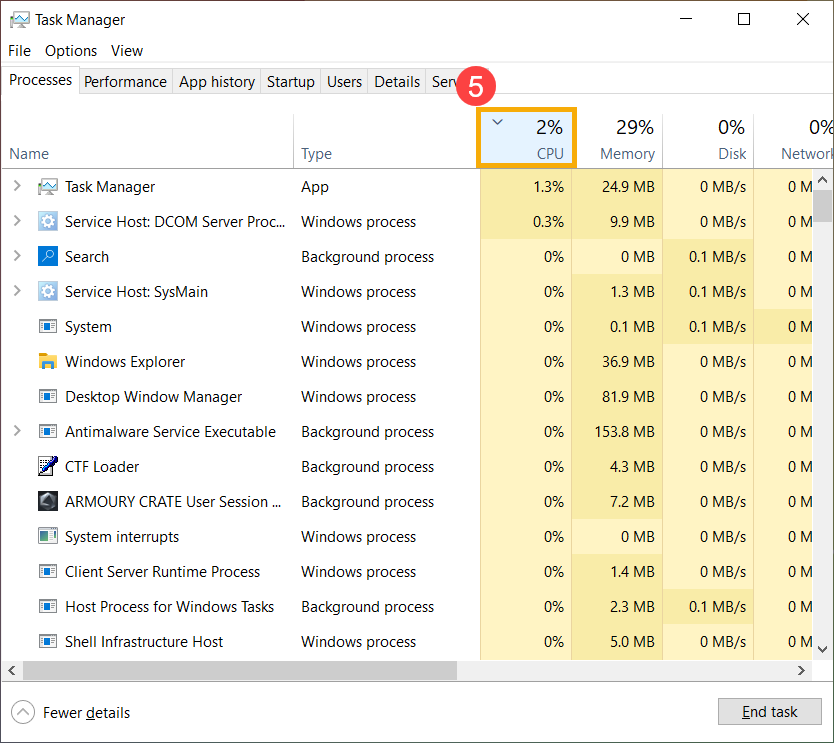
- If you want to see how applications are affecting your Memory, please click [Memory]⑥ column. It will sort by the percentage of Memory capability used (largest to smallest) by each process after the down-arrow
 appeared.
appeared.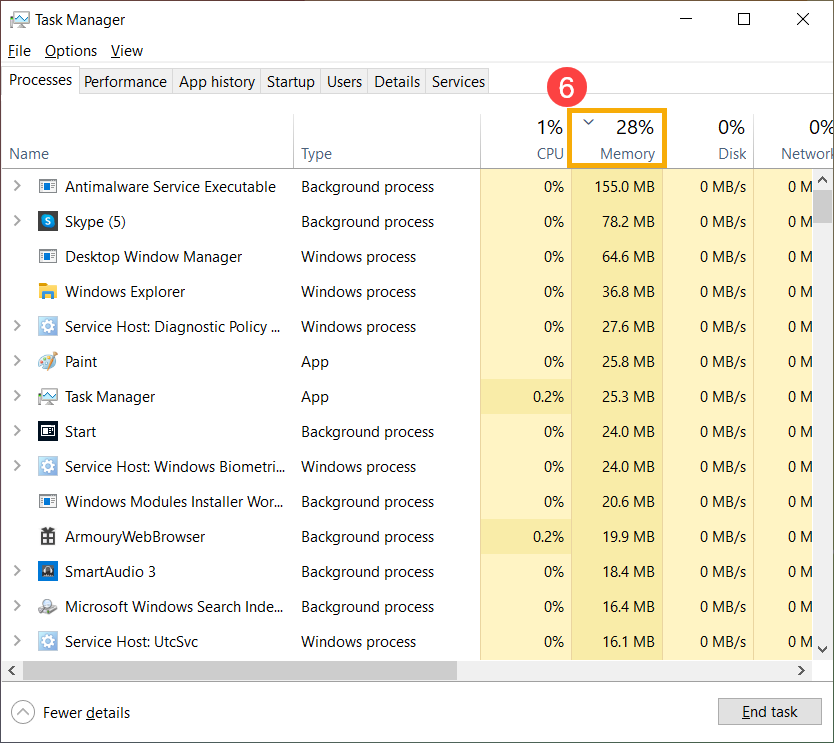
- After it sorts by the percentage of resources used by each process, you will see the occupied resources which belongs to applications type in your computer.
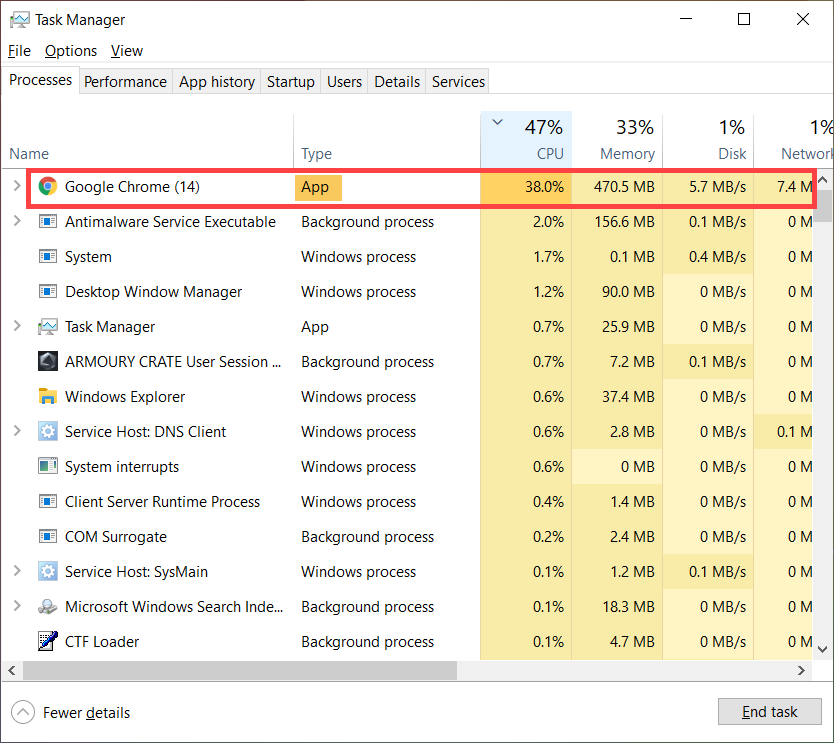
- If you would like to check the used status of other resources (such as Disk, Network, or GPU), please follow the above steps 3-6.
End any malfunctioning processes
While you observe some applications occupy a larger percentage of the resource, and you are not using them, if you want to end these processes, please try to normally close them first. (For example, open this application and click close.)
If it cannot be closed normally or the resource is still occupied in Task Manager after closing it, you can use Task Manager to force it to close.
Right-click on the process①, then select [End task]②, this process will be forced to close.
Note: If the type is not “App” (such as Windows process), we don’t recommend that you force to close it to prevent any abnormal system operation.
